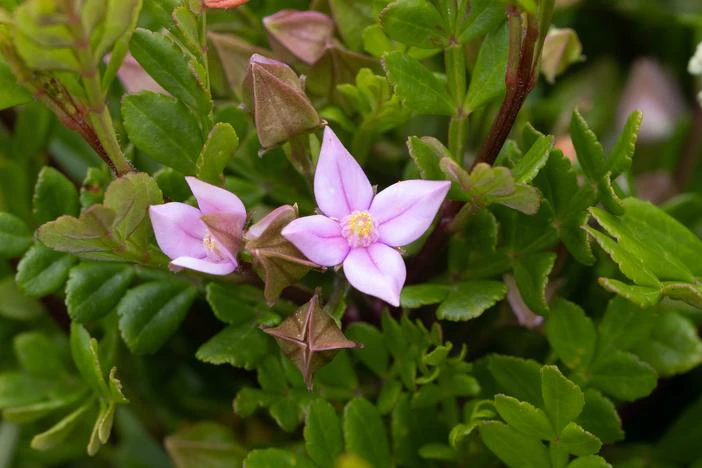Winged Boronia
(Boronia alata)
Winged Boronia (Boronia alata)
/
/

Kym Nicolson
CC BY 4.0
Image By:
Kym Nicolson
Recorded By:
Copyright:
CC BY 4.0
Copyright Notice:
Photo by: Kym Nicolson | License Type: CC BY 4.0 | License URL: https://creativecommons.org/licenses/by/4.0 | Uploader: Bracteantha | Publisher: Wikipedia Commons












Estimated Native Range
Climate Requirements for Tuscaloosa, Alabama
| This Plant | Your Site | Plant Suitability for Your Location | ||
|---|---|---|---|---|
| • Precipitation | 8" - 78" | 57" | Aquatic | Aquatic |
| • High Temp. | 52°F - 100°F | 92°F | Your summer temperatures are normal for this plant. | Excellent |
| • Low Temp. | 23°F - 65°F | 33°F | Your winter temperatures are normal for this plant | Excellent |
This plant may not grow well at your location - your precipitation is too high.
Summary
Boronia alata, commonly known as Winged Boronia, is an evergreen shrub native to the open woodlands and forest margins of Southwestern Australia. It typically grows to a height of 2-6 feet and a width of 3-5 feet. This plant is characterized by its winged branches and bears profuse, showy flowers that are predominantly pink, with some varieties displaying red or yellow hues, during the spring and summer months. The flowers are slightly fragrant and add a delicate aroma to garden settings.
Winged Boronia is valued for its attractive, long-lasting flowers and its ability to attract pollinators such as bees. It is often used in residential gardens for border planting or as a feature shrub due to its manageable size and ornamental appeal. While it prefers full sun or part shade, it requires well-drained soil and moderate watering, being somewhat drought-tolerant once established. It is also used for grafting purposes, with its vigorous rootstock serving as a base for grafting with Boronia pinnata, particularly for enthusiasts in England. Care should be taken to protect it from root rot and overwatering. In regions with heavy clay soils, raised beds or containers can be used to ensure proper drainage.CC BY-SA 4.0
Winged Boronia is valued for its attractive, long-lasting flowers and its ability to attract pollinators such as bees. It is often used in residential gardens for border planting or as a feature shrub due to its manageable size and ornamental appeal. While it prefers full sun or part shade, it requires well-drained soil and moderate watering, being somewhat drought-tolerant once established. It is also used for grafting purposes, with its vigorous rootstock serving as a base for grafting with Boronia pinnata, particularly for enthusiasts in England. Care should be taken to protect it from root rot and overwatering. In regions with heavy clay soils, raised beds or containers can be used to ensure proper drainage.CC BY-SA 4.0
Plant Description
- Plant Type: Shrub
- Height: 1.5-6 feet
- Width: 3-5 feet
- Growth Rate: Moderate
- Flower Color: Red, Pink, Yellow
- Flowering Season: Spring, Summer
- Leaf Retention: Evergreen
Growth Requirements
- Sun: Full Sun, Part Shade
- Water: Medium
- Drainage: Fast
Common Uses
Border Plant, Low Maintenance, Potted Plant, Rock Garden
Natural Habitat
Native to open woodlands and forest margins in Southwestern Australia
Other Names
Common Names:
Scientific Names: Boronia alata, Zanthoxylum oppositifolium, Boronia alata var. bipinnata, Boronia candollei, Boronia vilhelmii
GBIF Accepted Name: Boronia alata Sm.